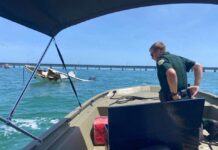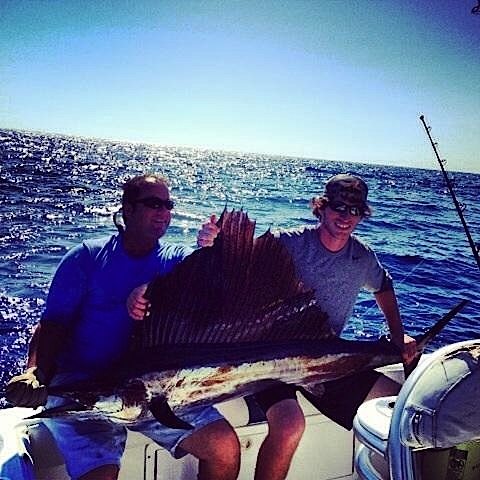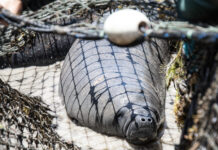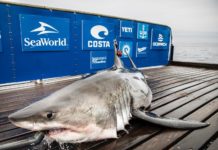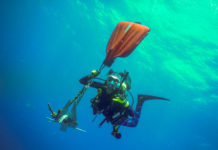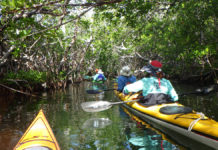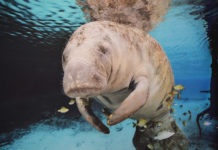Of all questions asked by my charters, I would say the three most common would be “How long have you been in Key West?”, “What is the biggest fish you ever caught?”, and “When is the best time to fish in Key West?”. My answer to those are as follows, “Since 1989”, “A 600-plus pound blue marlin” and “April, May and June.” The reason for the April, May and June answer was very obvious this week.
A strange phenomenon takes place every year around this time with the migration of the Atlantic sailfish. Its one of the most amazing fisheries we have here in the Keys. The northern edge of the Gulfstream pushes up close to the reef edge with a ripping east current and creates a very distinct green to blue color change of the water. The east wind creates a large rolling swell and the stage is set for the greatest sailfish performance in the Keys. When all of these conditions come together as they did this week, we have what is known as “tailing conditions.” This means that the sailfish are using the large swell to literally surf against the strong current and are gorging themselves on the baitfish, which have gathered on the color change.
They travel in schools, or “wolf packs,” and are very visible on the surface with the tip of their sickle like tail protruding through the surface. We wait all year for this to happen and it did (again) this week. I know of several boats reporting catches of over double-digit numbers and it looks like the conditions are going to prevail all through the rest of next week. This all sounds too good to be true, well there is a catch. The seas aren’t exactly calm and if you are prone to seasickness, you will probably be as green as a frog by the end of the day.
The bigger obstacle is the bait for these sailfish. When they are tailing, they will turn their bill up at a trolled ballyhoo. They are in search of live bait. Some days it is harder to catch the bait than the sails. Many types of bait will work but all seem to become very scarce when the sails show up. Threadfin herring are among the most common baits as well as live ballyhoo, goggle eyes, pilchards and small blue runners. These baits are very delicate and usually are only good for the duration of the trip so fresh bait needs to be caught every day. Patience and persistence are required when bait fishing. If you have a secret bait spot you had better keep it well hidden because every boat you see is in hot pursuit of something live and shiny to throw to a sailfish.
From a captain’s point of view, sailfishing gives us a chance to use just about every skill we have acquired through the years. Kite-fishing, throwing the cast net, spotting the fish, it is what we live for. I mean every captain rigs his kite a little differently, but you have never seen a greater feat of knot tying and rigging in your life. Wind-on leaders and solid rings, beads, indicator floats, egg weights, swivels — hell there is even a knot used to tie the bait to the hook — there are more bells and whistles on a sailfish rig than a Pandora Bracelet.
I must admit that when it’s rigged properly there is no greater way to present bait than suspended from a kite. We put all of these skills to the test this week and it was awesome. The best bite seemed to be just to the East of Key West from the Sambos reef to Sand Key from 100 feet of water out to about 210 feet. Along with the sails there were quite a few dolphin, a few tunas and a herd of bonito taking advantage of the conditions as well.
Don’t worry; if you do get seasick, there are still a lot of tarpon in the harbor where the seas are much flatter. Get out there and enjoy a great day on the water.





